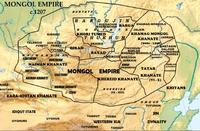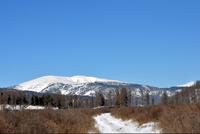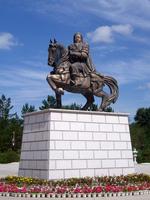You are in: Asia -> Mongolia -> Great Burkhan Khaldu... , and traditional search or Image Gallery will yield results of this site only
Great Burkhan Khaldun Mountain and its surrounding sacred landscape
| Site number: | 1440 |
|
| Type of site: | Cultural | |
| Date of Inscription: | 2015 | |
| Location: | Asia, Mongolia, Khentii Province, Khentii Mountains, Burkhan Khaldun | |
Up to 75 images are shown here. Click on each for more details or on Image Gallery for more images.
Six official UN languages:
English,
French,
Russian
Other languages: Azerbaijani, Bulgarian, Georgian, German, hindi, Italian, Japanese, Mongolian, Turkish, Ukrainian, Vietnamese, Welsh
Other languages: Azerbaijani, Bulgarian, Georgian, German, hindi, Italian, Japanese, Mongolian, Turkish, Ukrainian, Vietnamese, Welsh
| Description: | The site is situated in the north-east of the country in the central part of the Khentii mountain chain where the vast Central Asian steppe meets the coniferous forests of the Siberian taiga. Burkhan Khaldun is associated with the worship of sacred mountains, rivers and ovoo-s (shamanic rock cairns), in which ceremonies have been shaped by a fusion of ancient shamanic and Buddhist practices. The site is also believed to be the place of Genghis Khan’s birth and burial. It testifies to his efforts to establish mountain worship as an important part of the unification of the Mongol people. --WHMNet's description is from WHC Site, where additional information is available. | |
| The Burkhan Khaldun (Cyrillic: Бурхан Халдун) is a mountain of the Khentii Mountains in the Khentii Province of Mongolia. The mountain and/or its proximity are rumored to be the birthplace of Genghis Khan, as well as the purported location of his tomb. It is also the birthplace of one of his most successful generals, Subutai. The mountain is in the 12,000 km² Khan Khentii Strictly Protected Area established in 1992. It had strong religious significance before Genghis Khan made it a powerful landmark. It is considered the most sacred mountain in Mongolia, because it was first designated as sacred by Genghis Khan. Inscribed as the UNESCO World Heritage Site at the 39th session of the World Heritage Committee, on July 4, 2015. --Wikipedia [http://www.wikipedia.org]. Text is available under the Creative Commons Attribution- | ||
| Source: | http://whc.unesco.org/en/list/1440 | |
| Source2: | Wikipedia (http://wikipedia.com) | |
| Reference: | 1. UNESCO World Heritage Center (http://whc.unesco.org/en/list/1440). 2. Wikipedia. | |










